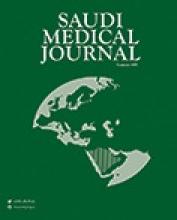Abstract
OBJECTIVE: To assess the bacteriological quality of dialysis fluid in 2 hemodialysis units in Alexandria, Egypt.
METHODS: A total of 321 samples of hemodialysis fluids, 213 from unit A (a governmental unit), 108 from unit B (a private unit), both under the supervision of ministry of health, were collected from the water treatment system (WTS), treated water, concentrates, and final dialysate from the beginning of March to the end of August 2005. Samples were analyzed for enumeration of the total viable heterotrophic bacteria using the standard pour plate method, and for the determination of the total coliforms (TC) using the presence/absence method. Fifty samples were also examined for endotoxin detection by the Limulus Amoebocyte Lysate assay (LAL), employing the gel clot method.
RESULTS: Percentages of acceptable samples of WTS were 67% from unit A and 66.7% from unit B, while the dialysate samples showed higher acceptability at unit B (86.1%) than unit A (51.7%). Eleven samples were detected as having TC. The LAL assay showed a range of 57-100% of samples exceeded 0.25 EU/ml. Analysis of these results and comparing them to other variables is further discussed.
CONCLUSION: The results demonstrate that hemodialysis centers need monitoring and preventive maintenance in order to ensure renal replacement therapy of good quality.
- Copyright: © Saudi Medical Journal
This is an open-access article distributed under the terms of the Creative Commons Attribution-Noncommercial-Share Alike 3.0 Unported, which permits unrestricted use, distribution, and reproduction in any medium, provided the original work is properly cited.






